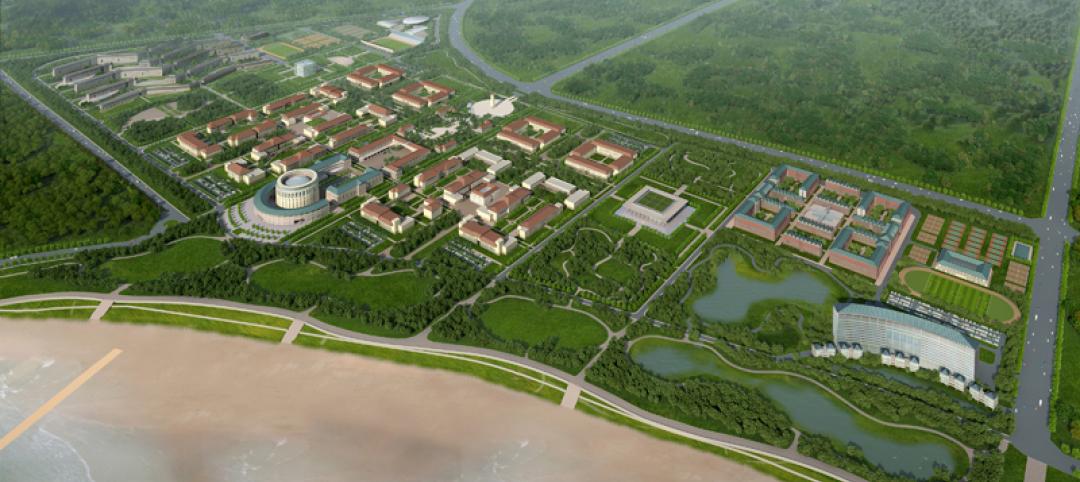In 2020, after the coronavirus pandemic hit, millions of people were stranded in their homes with little else to do outside of remote work than watch TV. That isolation created an unprecedented demand for new and original content, which in turn sparked a proliferation of streaming services that urgently needed more production space.
In 2020, there were about 12 million sf of sound stages in North America, according to CBRE estimates. And the utilization rate of that space, which three years earlier had stood at around 70 percent, was close to 100 percent, according to a Deloitte report that evaluated the Los Angeles, New York, and Toronto markets. The “high spend” on production was creating shortages and driving demand for new sound stages, stated Deloitte.
This void has inevitably attracted investment capital. In June 2020, Blackstone paid a reported $1.69 billion to acquire a 49 percent stake in Hudson Pacific Properties, which is active in sound stage acquisition, construction, and adaptive reuse. Last August, Blackstone and Hudson revealed plans to spend nearly $1 billion to build a film and TV studio campus in the United Kingdom.
Other development investors buzzing around this sector include Hackman Capital (which earlier this month acquired 130,000 sf of sound stage space from Raleigh Studios in Hollywood, and 182,000 sf of space on Sony Pictures’ animation campus); Quixote, Trammell Crow, Amazon Studios, and Square Mill Capital Management.
The race is now on to catch up with anticipated future production demand. The Hollywood Reporter published an article last month about the “boom” in building proposals, retrofits, and competition for longer-term leases. “I’ve never seen so much activity in my career,” Robert Hale, FAIA, Partner and Creative Director with the design collective RIOS, told the trade newspaper.
ARCHITECTS GETTING IN ON THE ACTION
RIOS is among the architecture and design firms that are capitalizing on this demand. Gensler has been working with Trilith Studios in Atlanta to expand its 700-acre film studio by 220,000 sf with spaces that include production workshops, smart sound stages, and a four-story creative office center that’s scheduled to open this spring.
Before the pandemic, construction accounted for 10 percent of Relativity Architects’ soundstage work; now, it represents 50 percent, confirms Tima Bell, Assoc. AIA, Principal with the Los Angeles-based firm, whom BD+C spoke with yesterday.
Bell, who grew up in L.A. (his father, Edward, was an actor and producer, and his stepmother was the actress and competitive swimmer Esther Williams), notes that studios in general had typically preferred to lease stages on a short-term basis, for as long as they needed the space to shoot a certain film. “Netflix changed everything,” he says of the streaming platform that has become a content production juggernaut. “In fact, Netflix needed space more than it needed content.”
Netflix started taking three-year leases, and quickly locked up soundstage spaces in Los Angeles, New York, and London. Other streaming platforms that subsequently came on the scene have followed suit. So while there are still stages available for leasing, their numbers are far fewer; hence, the demand for new construction.
“I’ve been in the business a long time, and content has never slowed; it has only expanded,” says Bell. Even if the amount of content produced was static, there wouldn’t be excess sound stage space for another five years. What Bell does foresee, though, is a shift in the way movies are made toward relying more on virtual sets via Extended Reality (XR) technology.
NEW BUILDS AND RENOS ABOUND

Bell says his firm’s sound stage clients run the gamut from Internet content providers, management companies, and capital investors. Production companies still would rather lease than own space, and sound stage clients only show interest after projects have secured a permit.
The “key ingredients” in designing and building studios, Bell explains, are clear floor space (i.e., no columns), ample ceiling height, and power. And because these buildings usually require a large real estate footprint, the sound stages are often located in industrial areas of cities. For example, last year Relativity was working with Capture Studios on a remodel of an existing theater in Studio City along the Los Angeles River. For that project, the Building Team removed an oversized mezzanine and opened up the second-floor ceiling. The team also redid the building’s façade.

Relativity is currently working on adaptive reuses of two cold-storage warehouses, one that will be 90,000 sf and the other 200,000 sf, of which 120,000 sf will be stages and the rest offices.
Bell adds that his company is in the early design stages of two ground-up studio campuses. Nondisclosure agreements prevented him from saying much more beyond that the projects range from 14 to 20 acres, and 12 to 18 stages in multiple buildings sized between 15,000 and 50,000 sf.
(On its website, Relativity Architects says it is designing a 210,000-sf studio campus in Canada that will have four production stages, post-production offices, screening rooms, and support and amenities spaces. Relativity is also engaged in a project for Ace + Mission Studios in Los Angeles that, when completed, will offer 604,494 sf of space that includes three soundstages and production offices.)

Bell says his firm is in design on other sound stage projects in New York, Atlanta, and Eastern Europe. He notes that outside of Los Angeles, the availability of tax credits plays a large role in where stages are being built.
Because it has been designing sound stages for several years, Relativity Architects has a track record that newcomers to this sub-sector do not, says Bell. “With only a couple of exceptions, most of the new entrants don’t have experience with this building type, which has circulation and technology requirements.”
Sound stages also open new creative portals for Relativity’s architects and designers who previously have worked on other building types like hospitality or housing.
Related Stories
| Nov 23, 2011
Lord, Aeck & Sargent opens fourth U.S. office, acquiring architecture firm in Austin, Texas
Strategic move offers growth opportunity and strengthens the firm’s historic preservation portfolio.
| Nov 23, 2011
Griffin Electric completes Gwinnett Tech project
Accommodating up to 3,000 students annually beginning this fall, the 78,000-sf, three-story facility consists of thirteen classrooms and twelve high-tech laboratories, in addition to several lecture halls and faculty offices.
| Nov 22, 2011
Corporate America adopting revolutionary technology
The survey also found that by 2015, the standard of square feet allocated per employee is expected to drop from 200 to estimates ranging from 50 to 100 square feet per person dependent upon the industry sector.
| Nov 22, 2011
Report finds that L.A. lags on solar energy, offers policy solutions
Despite robust training programs, L.A. lacks solar jobs; lost opportunity for workers in high-need communities.
| Nov 22, 2011
Saskatchewan's $1.24 billion carbon-capture project
The government of Saskatchewan has approved construction of the Boundary Dam Integrated Carbon Capture and Storage Demonstration Project.
| Nov 22, 2011
New Green Matters Conference examines emerging issues in concrete and sustainability
High-interest topics will be covered in technical seminars, including infrared reflective coatings for heat island mitigation, innovative uses of concrete to provide cooling and stormwater management, environmental benefits of polished concrete, and advancements in functional resilience of architectural concrete.
| Nov 22, 2011
Suffolk Construction selected as contractor for Boston luxury residential tower
Project team breaks ground on 488,000-sf building that will feature world-class amenities.
| Nov 22, 2011
Jones Lang LaSalle completes construction of two new stores in Manhattan
Firm creates new global design standard serving as project manager for Uniglo’s 89,000-sf flagship location and, 64,000-sf store.















